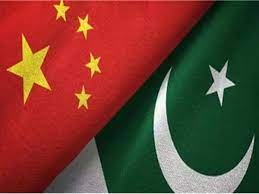Domestic Coal
Pakistan plans to urge Chinese power plants operating within its borders to transition from imported coal to coal sourced from Sindh’s Thar region.
This initiative, announced by Power Minister Awais Leghari on Sunday, is part of a broader strategy to reduce energy costs and address the country’s foreign exchange challenges.
During an upcoming visit to Beijing, Islamabad will also consider discussions on restructuring Pakistan’s energy sector debt, Leghari stated in an interview with Reuters.
These talks are part of a series of structural reforms suggested by the International Monetary Fund (IMF), which recently approved a $7 billion bailout for Pakistan to alleviate its heavy debt burden.
The Chinese government has invested over $20 billion in Pakistan’s energy sector, setting up numerous projects across the country.
A key focus of the Pakistani delegation, led by Leghari, will be the conversion of coal-fired power plants from imported coal to local coal.
This transition is expected to significantly lower energy costs and reduce the strain on Pakistan’s foreign exchange reserves. Additionally, it will facilitate the repatriation of dividends for Chinese-owned plants and improve returns in dollar terms.
Leghari emphasized the potential savings from this shift, estimating that it could save Pakistan over Rs200 billion ($700 million) annually in import costs. This could result in a decrease of up to Rs2.5 per unit in electricity prices.
In April, Engro’s subsidiary agreed to sell its thermal assets, including Sindh Engro Coal Mining, to Liberty Power. This decision was influenced by Pakistan’s foreign exchange challenges and the potential of its indigenous coal reserves.
While Leghari did not provide details on the possible talks with China regarding energy debt restructuring, he acknowledged the significant challenges facing Pakistan’s power sector.
High rates of power theft and distribution losses have led to accumulating debt, a concern highlighted by the IMF. The government aims to reduce “circular debt”—public liabilities arising from subsidies and unpaid bills—by Rs100 billion ($360 million) annually through structural reforms.
The impact of previous IMF bailouts, which included raising power tariffs, has been particularly hard on poor and middle-class households.
The resulting higher tariffs have led to a decrease in annual power consumption for the first time in 16 years, despite soaring summer temperatures that typically drive up the use of air conditioning and fans.
Leghari noted a shrinking demand for power over the past year and a half, attributing this trend to the higher cost of electricity. Urban and rural households are increasingly turning to alternatives such as solar power.
Currently, around 1,000 megawatts of solar power are integrated into the national grid through net metering systems, but Leghari estimates that the actual contribution of solar power could be five to six times higher.
The government major challenge now is to stabilize demand and make power more affordable for the populace, as it navigates these significant energy sector reforms.


